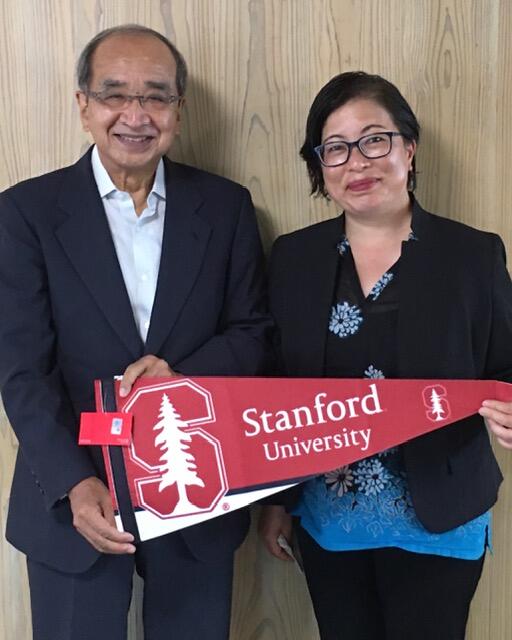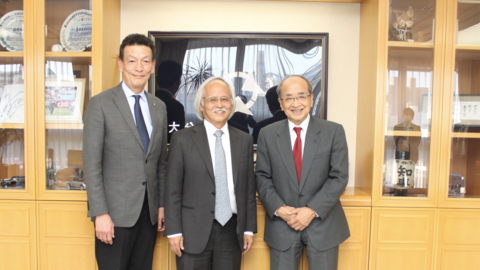The following is Part 10 of a multiple-part series. To read previous installments in this series, please visit the following articles: Part 1, Part 2, Part 3, Part 4, Part 5, Part 6, Part 7, Part 8 and Part 9.
Since December 8, 2020, 91│į╣Ž has posted nine articles that highlight reflections from 72 students on the question, ŌĆ£What does it mean to be an American?ŌĆØ Part 10 features eight additional reflections. The reflections below do not necessarily reflect those of the 91│į╣Ž staff.
The free educational website ŌĆ£ŌĆØ offers six lessons on immigration, civic engagement, leadership, civil liberties & equity, justice & reconciliation, and U.S.ŌĆōJapan relations. The lessons encourage critical thinking through class activities and discussions. On March 24, 2021, 91│į╣ŽŌĆÖs Rylan Sekiguchi was honored by the Association for Asian Studies for his authorship of the lessons that are featured on the website, which was developed by the Mineta Legacy Project in partnership with 91│į╣Ž.
Tai Brown, Oregon
When I think about what being an American means to me, in my mind, itŌĆÖs about how I am able to voice my opinion and be heard by others. This is a reality that many people take for granted. The ability that I, and all other Americans have, to influence the people around us with our voices and our individual opinions is something which I feel many Americans think of as more of a right, and donŌĆÖt realize it is such a privilege. I recognize that I have this privilege, so even when I donŌĆÖt get my way, IŌĆÖm able to realize how people in some countries arenŌĆÖt able to say what they want. Being aware of this freedom makes me realize how lucky I am to be an American.
Thea Louise Dai, California
When I think of the term ŌĆ£American,ŌĆØ my mind immediately drifts toward the American dream: a promise of opportunity and freedom that drew my parentsŌĆöand so many others like themŌĆöto this country. But the United States, as IŌĆÖve grown to learn, is far from perfect. In the past few years alone, IŌĆÖve witnessed that inequalities can divide our country, violence can terrorize our communities, and systemic racism can cripple our institutions. In the classroom, IŌĆÖve read about racist housing policies, discriminatory immigration practices, and failed U.S. military missions. To me, being American means seeing the United States with all its blemishes and imperfections, and still believing in the possibility of change. Americans actively invest in the U.S.ŌĆÖs future by celebrating our successes and values, acknowledging our shortcomings, and fighting for the prospect of a better country.
Tadeusz Jose, California
There is something abstract about America. Being so vast in the experiences of its people, America is hugely interpretable. And each interpretation, however contradictory to another, is justifiable and valid. To many, America has been a land of safety and success. To many, America has been a cruel home, a source of pain and anguish on the individual to the societal level. So then, how can a common identity exist between people without a common experience? How can people who live in such different Americas have a common American identity? Because our identity lies in the American ideal, not the American reality. Every American believes in this countryŌĆÖs promise of opportunity, freedom, and equality. I think someone who came to America ten minutes ago believing in those ideals is just as American as a founding father. Being American is believing in America.
Kai Kaplinsky, California
I do not have a short and clear answer. I was born in Israel and raised in Tel Aviv, Tokyo, and now California. My family is both Japanese and Israeli/Jewish, and my upbringing and nationalities are filled with diversity. When I think of the United States or being an American, it means having opportunities; viewing failure as not trying or an incentive to try harder; appreciating differences; and having an impact as an immigrant. Like any other place, differences in gender, race, and ethnicity can make life as a minority challenging in the United States. But I feel that the United States, as a country, is represented by people who are vocal and trying to execute changes and are constantly moving in a better direction. I feel that what it means to be an American depends on us, and how we live our lives.
Abigail Kim, California
To me, the American identity is like the inside of a mixing pot. I cannot think of one culture that ties us all together. We are the product of so many different cultures and people from all over the world interacting and learning from one another, eventually evolving into a broad identity labeled as ŌĆ£American.ŌĆØ As the daughter of two Korean immigrants, itŌĆÖs hard for me to feel ŌĆ£American.ŌĆØ Being American in its very essence is not limited to my own experience. Even though the American identity is so inclusive, I feel as though knowing only one cultureŌĆömy Korean American cultureŌĆöand knowing less about the other cultures that mix into being American limits my ability to truly be an American. Thus, I think that being American is really about education: how keenly aware one is of the people who make up this country and the individual experiences we have as we intermingle with each other.
Joshua Koo, California
I am fully Korean by birth and spend every summer there. So do I feel fully ŌĆ£AmericanŌĆØ? That is something IŌĆÖve always wondered. Sometimes I feel like a stranger in a strange land in both countries, despite having dual citizenship. People always ask me in what country I will choose to live my adult life, and, to be honest, I donŌĆÖt know. But that is the beauty of America. America does not make me choose. America allows everyone to find out who they are and live for that. I can live in Korea for twenty years and still return as a U.S. citizen, and I will feel at home. That is the dream of America: to make everyone feel at home. Not everyone does, of course, but America is the one place whose ideal is to always try.
Elise Lamb, Oregon
To me, being an American means having the rights I am entitled to while being confident in my ability to take a stand against any who attempt to strip them away from me. Looking at the patriotism of those around me, it often feels as though the privileges of being an American get drowned out in the negative aspects of the country. However, unlike the vast majority of the world, America not only allows, but encourages independence and self-determination, placing importance on those finding their own identity and success. Of course, America is far from perfect, but itŌĆÖs essential that Americans acknowledge the liberties and opportunities allotted to them, especially in a setting where those privileges are hard to find.
Alyssa Wang, California
To me, being American means being free. This concept is shown throughout our history, from the First Amendment (the right to freedom of speech and religion), to AmericaŌĆÖs icon of Lady Liberty, and so much more. Being Japanese on my motherŌĆÖs side and Chinese and European on my fatherŌĆÖs, I have heard stories from my maternal grandparents about the Japanese American internment camps and stories about my paternal grandparentsŌĆÖ experiences in New York. Looking back, I feel incredibly grateful for the freedoms that we have today. Even though the United States is not perfect, we are doing our best to provide liberty and opportunities that arenŌĆÖt possible in some other countries. We, as Americans, have the freedom to pursue our dreams and make our own choices. We have the freedom to determine our government, to decide our beliefs, and to define our own future.





























